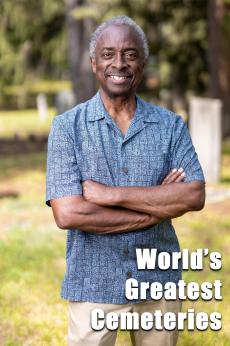Odysseus Returns
An amateur historian, Makis Metaxas, claims he found the bones of Odysseus, the hero of Homer’s epic poem, the Odyssey. But the discovery is soon embroiled in controversy, and Makis embarks on his own odyssey to convince the world he is right.
Previews + Extras

Preview
S1 E1 - 30s
An amateur historian, Makis Metaxas, claims he found the bones of Odysseus, the hero of Homer’s epic poem, the Odyssey. But the discovery is soon embroiled in controversy, and Makis embarks on his own odyssey to convince the world he is right.

Discovery of a Tomb
S1 E1 - 1m 37s
Is King Odysseus, the Trojan-horse-building genius in Homer’s epic poem The Iliad, merely a figure of ancient fiction — or was he a flesh-and-blood man? In 1991, Makis Metaxas, a local politician on the Greek island of Kefalonia, discovers a 3000-year-old Mycenaean tomb. However, the discovery is soon embroiled in controversy, and Makis embarks on his own odyssey to convince the world he is right.

Where is Ithica?
S1 E1 - 1m 55s
Homer calls Odysseus “King of the Ithacans.” But there are no Mycenaean ruins on modern-day Ithaki. Why? At other places Homer writes about in the Iliad and the Odyssey, like Mycenae and Pylos, archeologists have found the remains of powerful cities. More than 150 years of excavations on the island of Ithaki have yielded nothing. Perhaps that’s because they were looking in the wrong place.

Makis Finds the Tomb
S1 E1 - 2m 37s
Makis Metaxas believes Odysseus' kingdom was in his hometown on the island of Kefalonia. In 1991, while he was mayor of the small port of Poros, he and his wife Hettie Metaxas-Putman Cramer read geographic clues in Homer to develop a theory on the location of the ancient kingdom of Ithaca. Then Makis spent six months walking around looking for the large rocks used in Mycenaean buildings.

Ismini Describes Excavation
S1 E1 - 2m 25s
Ismini Milliaresis describes the dig that took place on her family's land on Kefalonia in 1992. The discovery of a large, beehive-shaped tomb raised hopes that this might be the final resting place of a Bronze-Age Mycenean king. After clearing the debris, archeologists expected to find burials. However, the floor of the tomb was empty … until they realized the floor was not really a floor.

Finding the Seal
S1 E1 - 2m 36s
The 1992 excavation of the tomb Makis Metaxas found on Kefalonia gives up an incredible piece of evidence. At the lowest level of a series of graves, Greek archeologist Lazaros Kolonas finds gold jewelry and a royal seal made of fine rock crystal. The image carved on it – a dog attacking a fawn – is uncannily similar to Homer’s description of Odysseus’ royal symbol.
Similar Shows


Prohibition
History

Frank Lloyd Wright
History

Coronation Girls
History


Miss Springmaid
History

World's Greatest Cemeteries
History

Escape from a Nazi Death Camp
History

The White House: Inside Story
History

PBS PASSPORT
Stream tens of thousands of hours of your PBS and local favorites with WETA+ and PBS Passport whenever and wherever you want. Catch up on a single episode or binge-watch full seasons before they air on TV.